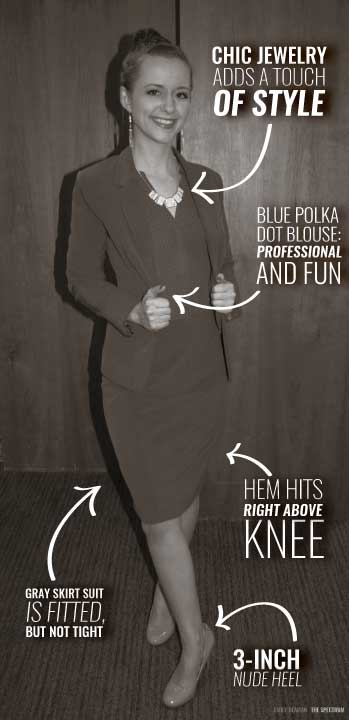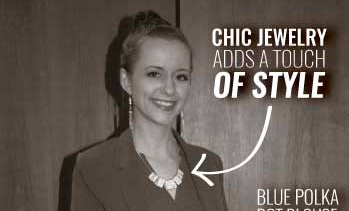
For the men’s guide to career dressing, read here.
It only takes a few seconds for a potential employer to form a powerful first impression of you.
When you go to a career fair or interview, you want your outfit to be appropriate, flattering and expressive of who you are, which is no easy task by any means.
If the dress code is business casual, you can wear khakis, slacks or a skirt with a blouse or a business style dress. Business professional dress (also called business formal) means donning a skirt or pant suit with a dress shirt.
For the upcoming career expo on Tuesday and Wednesday, either business casual or business professional dress is appropriate.
For an interview, however, the standard is to wear a skirt or pant suit. Navy blue or gray suits look professional and contemporary, but black can work if you’re interviewing with a more conservative company.
An ill-fitting interview outfit will not only make you look sloppy, but also make it seem like you don’t really care about the position.
“Your clothes give your interviewer cues to who you are,” says Jill Wilkey, director of the NDSU Career Center. Make sure that your look is tailored perfectly to your body, but not too tight. The collar should be tucked inside the blazer, and shirt cuffs should peek out a bit from the jacket, hitting right where your palm starts when your arms are resting at your sides.
Whether you tuck your shirt in depends on the style of shirt as well as the pants or skirt you’re wearing with it. Tucking a blouse into a high-waisted bottom generally makes your legs look longer, your waistline appear slimmer and your whole outfit look more pulled together. If you’re pairing a top with low-waisted pants or if you like to conceal your midsection, you can get away with leaving it untucked as long as it doesn’t show from underneath the blazer.
Dresses should be structured and modest with a hem that that goes at least to the knee and a neckline that doesn’t reveal any cleavage. Choose closed-toe shoes in a neutral color like nude or black. Heels generally shouldn’t be over 2 to 3 inches, but if you do want to wear a higher heel, just make sure it doesn’t have a platform. The hem of wider-legged pants should be off the ground but not show much more than an inch of heel.
With so many guidelines to follow, you might not feel quite like yourself in an interview outfit. While it is necessary to follow decorum, it doesn’t mean your look has to be boring and commonplace.
“Do something that sets you apart,” says AJ Wilson, a sales associate at The Limited. “You have to sell yourself and your personality.”
The amount of personal style you can show through your interview attire depends on the company you’re interviewing with. In professions like health care and finance, you are expected to be in conservative business professional dress. But in more creative fields like design or public relations, your interviewer might specifically be looking for you to show a little creativity in what you wear.
There are many different ways to show your personal style and still be appropriate. Jewelry and scarves are a great way to add flair to your outfit as long as they are simple, chic and silent (read: no bangles).
A modern cut, like a tapered trouser, gives your outfit a more fashionable look. You can also try a suit in a subdued color like maroon or blush or mix a neutral colored pant with a colored blazer, but you might want to wait to experiment with this until after you’ve landed the job if the company isn’t very creative.
Wearing a fun patterned blouse under a suit or slipping on a cool pair of shoes can add a touch of personality as well. If a suit is making you look or feel stuffy, choosing a soft blouse to go underneath it will feminize and soften the look. You could even try to subtly flatter the organization by incorporating a company color or theme into your outfit.
Remember that it’s often the little things, good or bad, that make you memorable to an interviewer.
